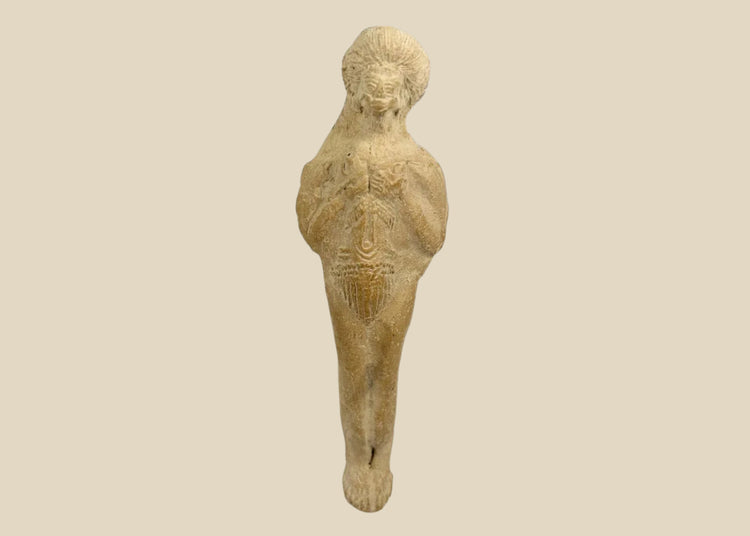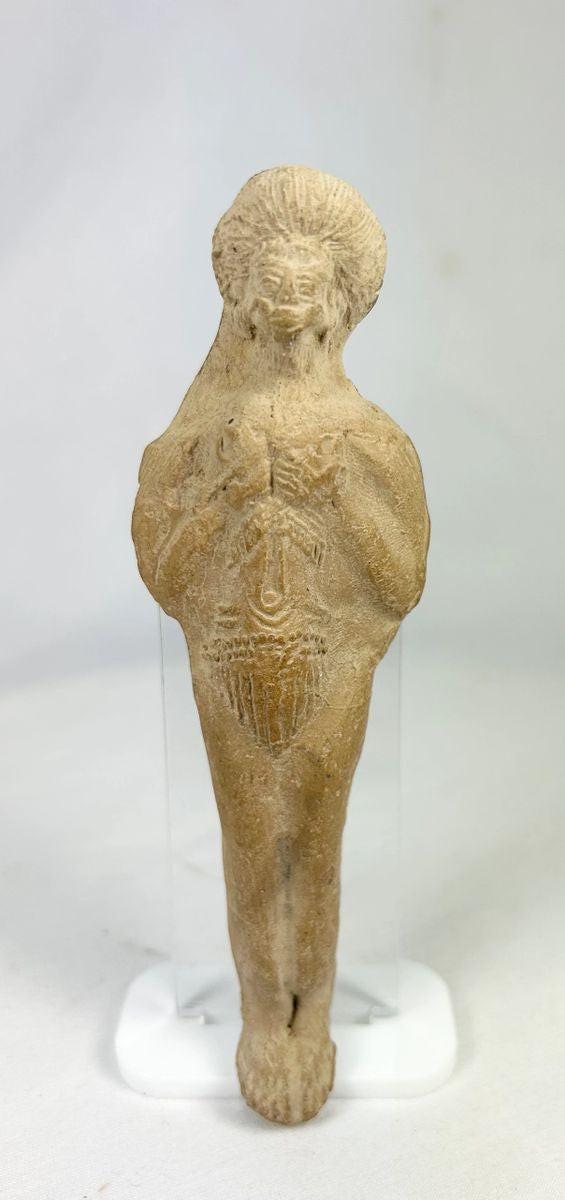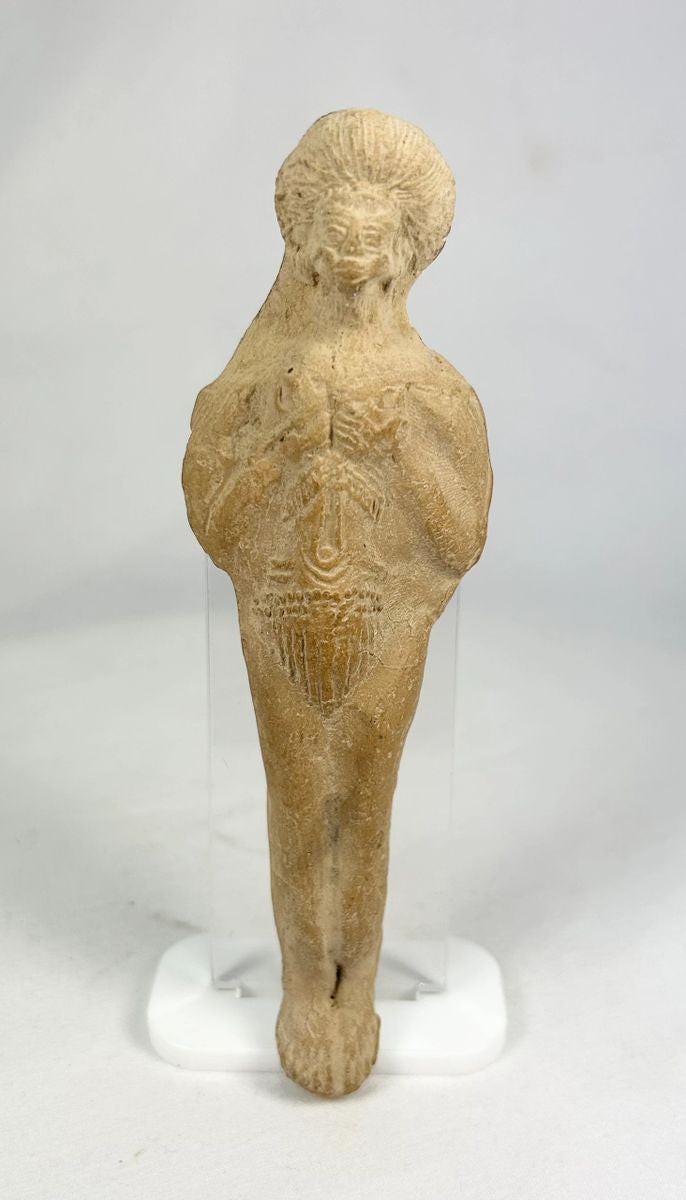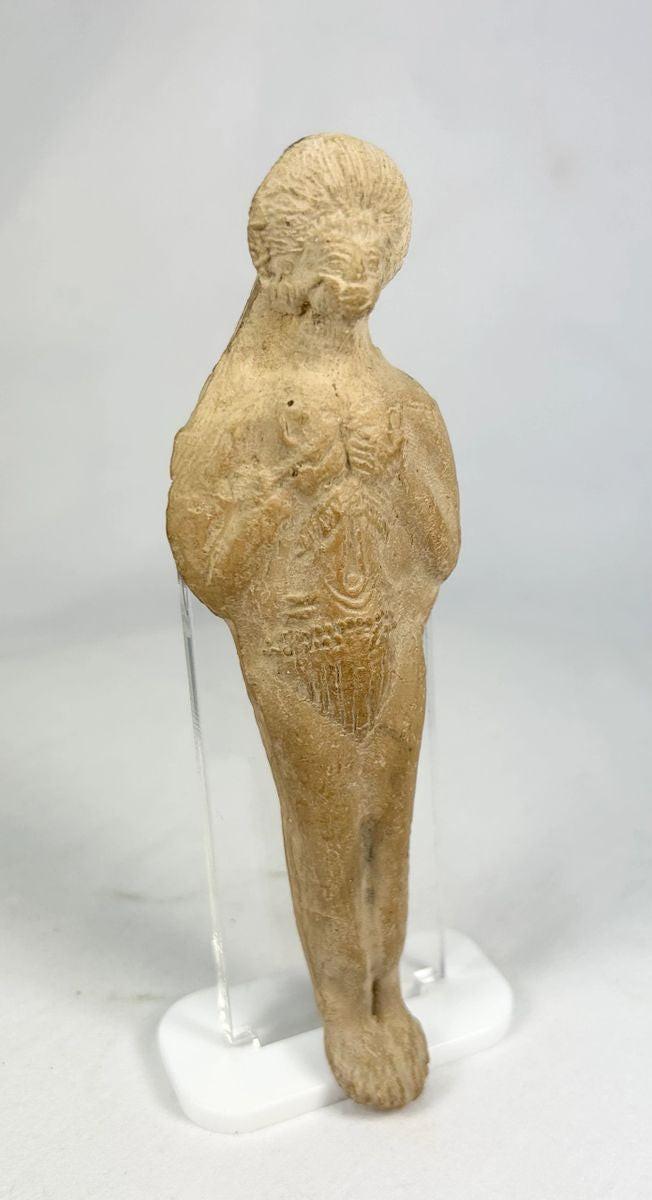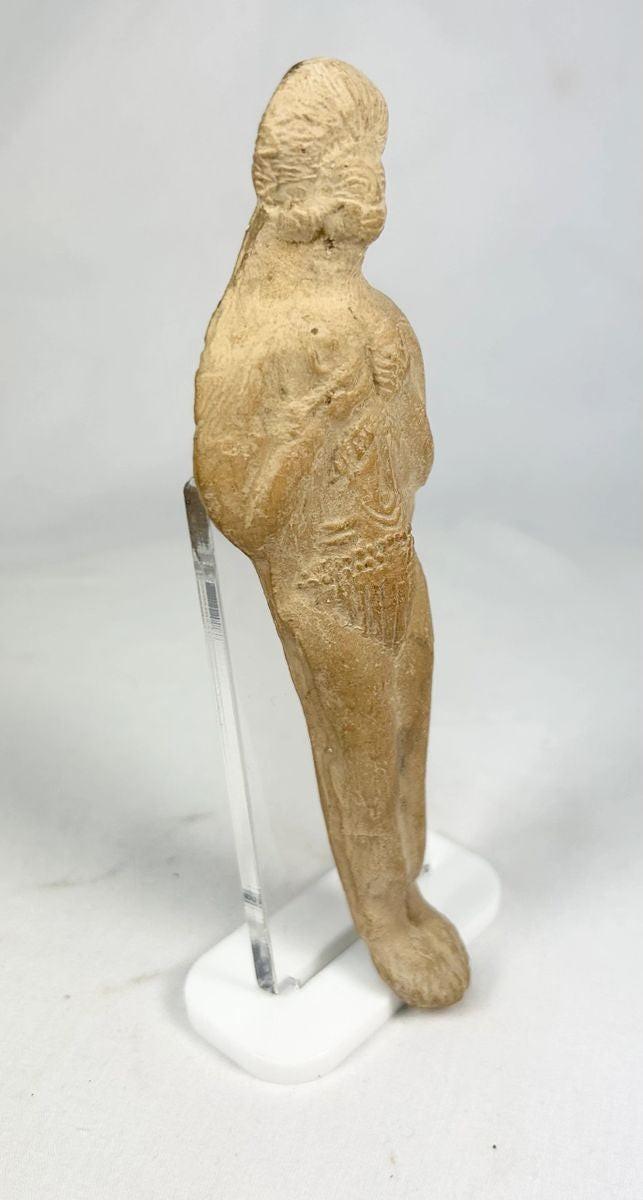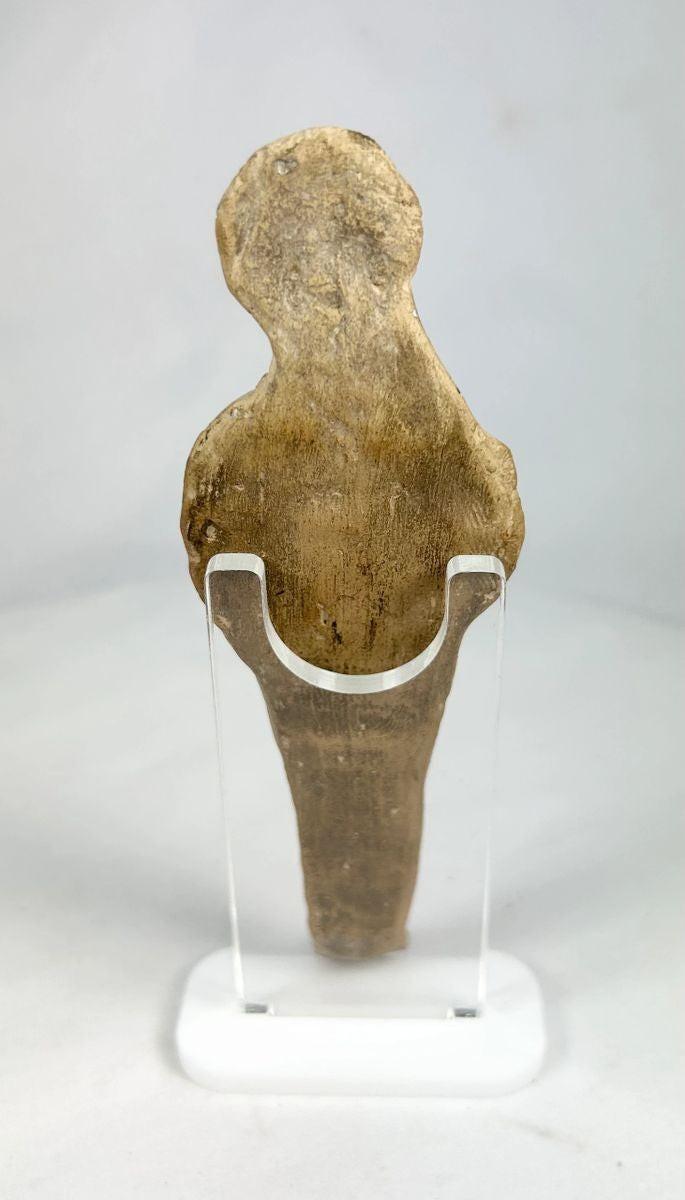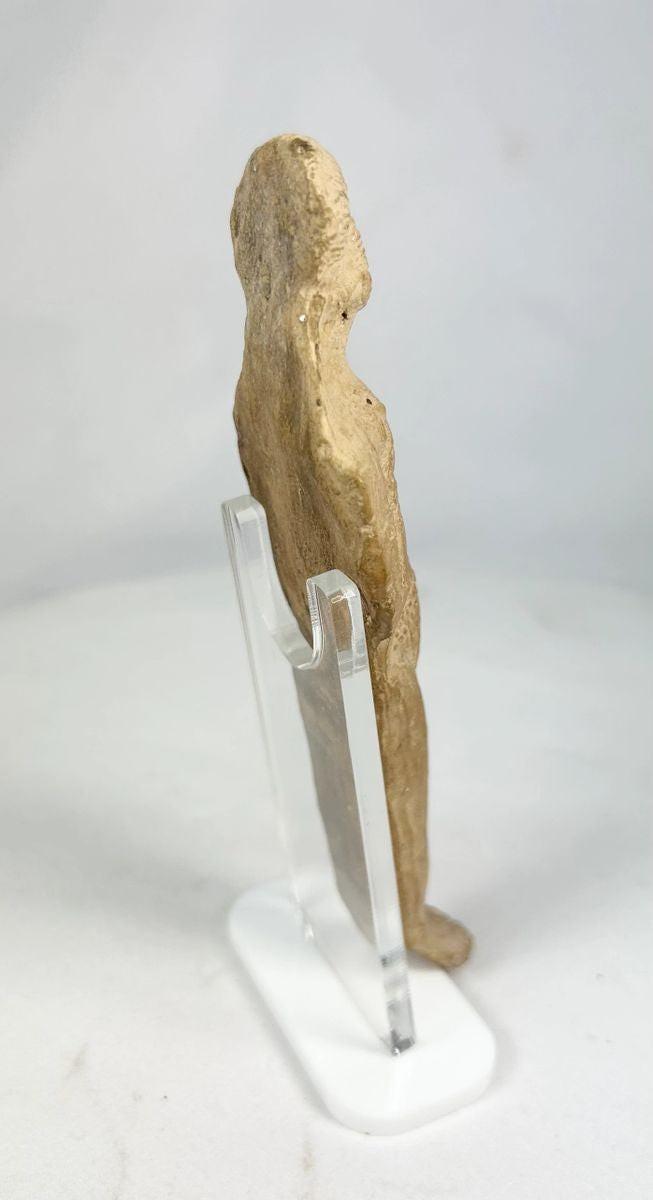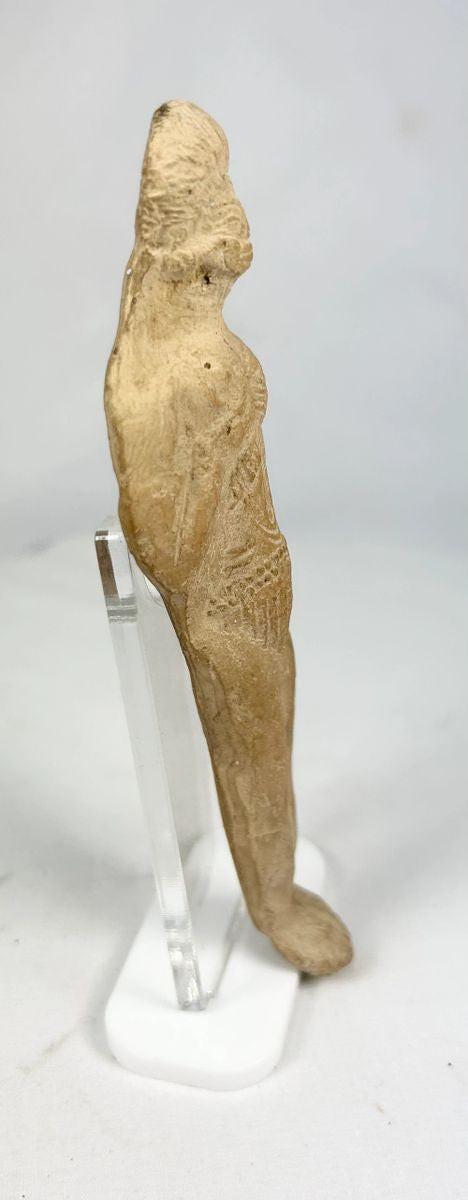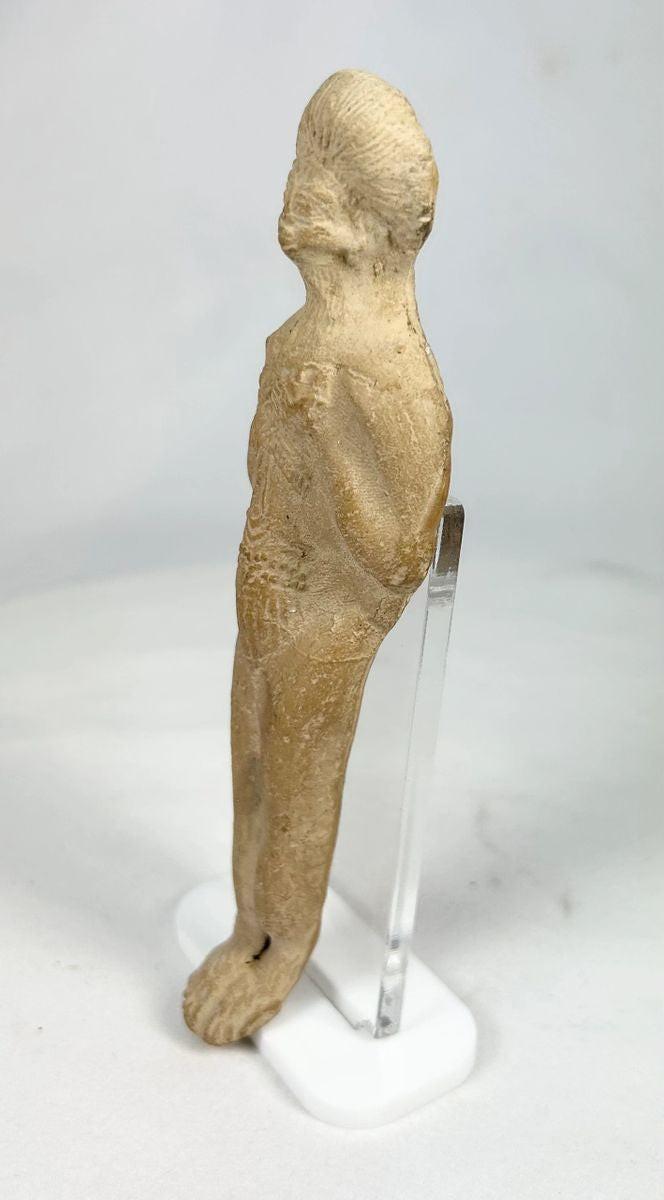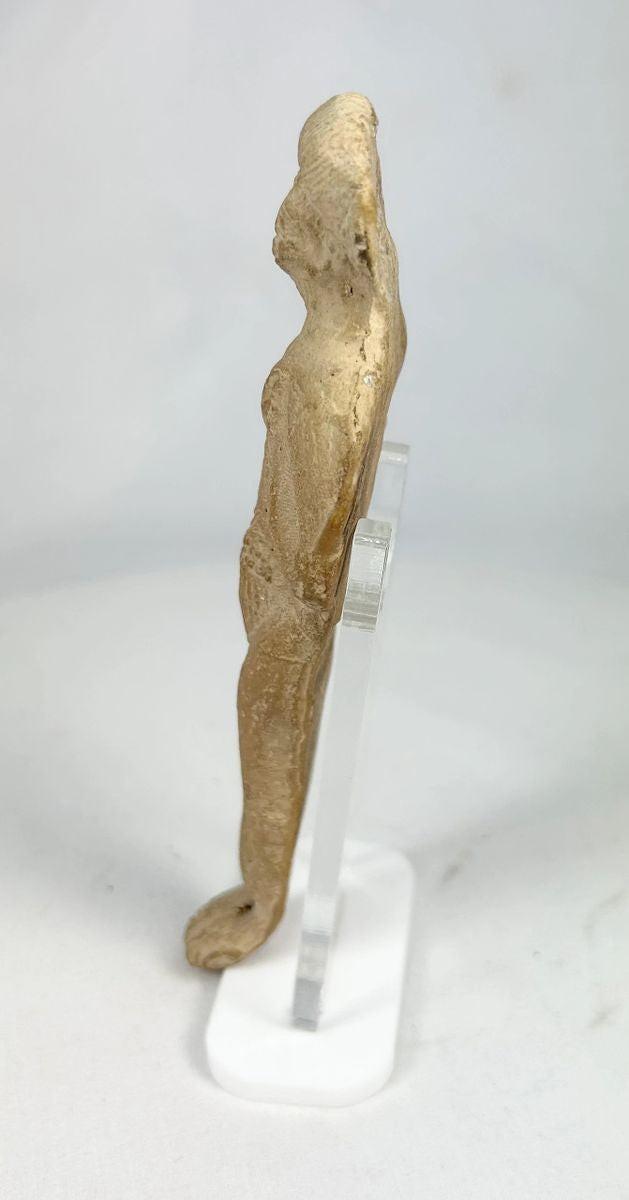Ancient Roman Terracotta | Fertility Symbol of Protection & Prosperity | 1st–3rd Century CE
Description
More
Less
Historical Context & Origin
Region: Ancient Rome
Material: Hand-formed terracotta clay
Period: 1st–3rd Century CE
Description
This terracotta figure is a fine example of Roman devotional art, created during a period when fertility, prosperity, and divine protection were central to daily life and religious practice. Such figures were placed in household shrines, temples, or tombs as votive offerings, invoking blessings of safe childbirth, agricultural abundance, and familial well-being. The craftsmanship reflects the Roman tradition of depicting fertility deities such as Venus, Ceres, or Isis, emphasizing the life-giving energy associated with divine intervention. The figure’s raised arms and stylized details suggest an invocation or offering gesture, underscoring its ceremonial importance.
Features
- Detailed facial expression with stylized hair, typical of Roman fertility goddesses
- Intricate incised torso detailing, possibly representing ritual garments or adornments
- Raised arms with sculpted fingers in a gesture of offering or invocation
- Natural mineral deposits and earthen patina from centuries of burial
- Compact form suitable for domestic shrines or temple use
Cultural Significance
Roman fertility figures played a vital role in both public and private worship, serving as protective amulets and ritual objects. Their presence in households symbolized divine guardianship, while their use in temples and tombs reflected prayers for prosperity, fertility, and safe passage into the afterlife. Accessible to both elites and common citizens, these figures illustrate the widespread devotion to fertility cults and the importance of agricultural and familial prosperity in Roman society.
Condition
The figure displays natural aging, with minor surface wear and weathering consistent with long-term burial. Mineral deposits and an aged earthen patina enhance its authenticity. Despite centuries of age, the piece remains structurally stable with well-preserved carved details, retaining its expressive power and spiritual resonance.
Dimensions (approximate)
Height: 5.5 in
Age
Over 1,700 years old
Learn More
Explore the Origins and Meaning of Fertility Icons
Description
Historical Context & Origin
Region: Ancient Rome
Material: Hand-formed terracotta clay
Period: 1st–3rd Century CE
Description
This terracotta figure is a fine example of Roman devotional art, created during a period when fertility, prosperity, and divine protection were central to daily life and religious practice. Such figures were placed in household shrines, temples, or tombs as votive offerings, invoking blessings of safe childbirth, agricultural abundance, and familial well-being. The craftsmanship reflects the Roman tradition of depicting fertility deities such as Venus, Ceres, or Isis, emphasizing the life-giving energy associated with divine intervention. The figure’s raised arms and stylized details suggest an invocation or offering gesture, underscoring its ceremonial importance.
Features
- Detailed facial expression with stylized hair, typical of Roman fertility goddesses
- Intricate incised torso detailing, possibly representing ritual garments or adornments
- Raised arms with sculpted fingers in a gesture of offering or invocation
- Natural mineral deposits and earthen patina from centuries of burial
- Compact form suitable for domestic shrines or temple use
Cultural Significance
Roman fertility figures played a vital role in both public and private worship, serving as protective amulets and ritual objects. Their presence in households symbolized divine guardianship, while their use in temples and tombs reflected prayers for prosperity, fertility, and safe passage into the afterlife. Accessible to both elites and common citizens, these figures illustrate the widespread devotion to fertility cults and the importance of agricultural and familial prosperity in Roman society.
Condition
The figure displays natural aging, with minor surface wear and weathering consistent with long-term burial. Mineral deposits and an aged earthen patina enhance its authenticity. Despite centuries of age, the piece remains structurally stable with well-preserved carved details, retaining its expressive power and spiritual resonance.
Dimensions (approximate)
Height: 5.5 in
Age
Over 1,700 years old
Learn More
Explore the Origins and Meaning of Fertility Icons
You May Also Like






























